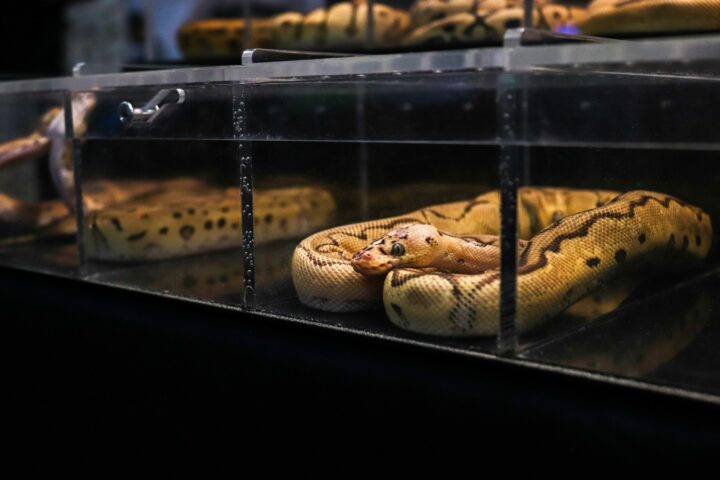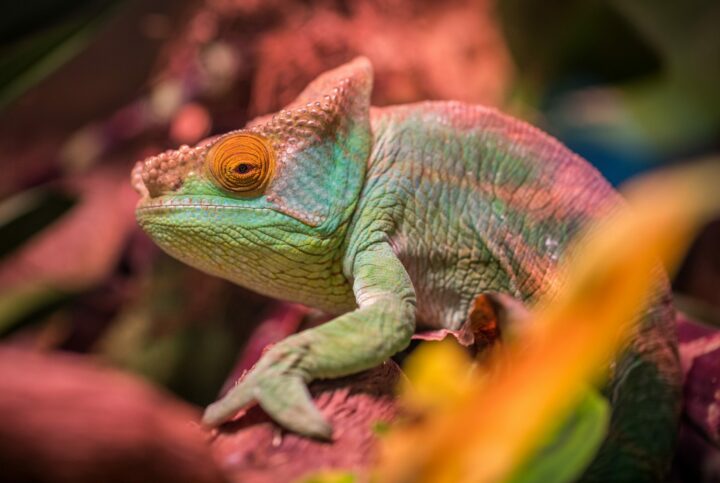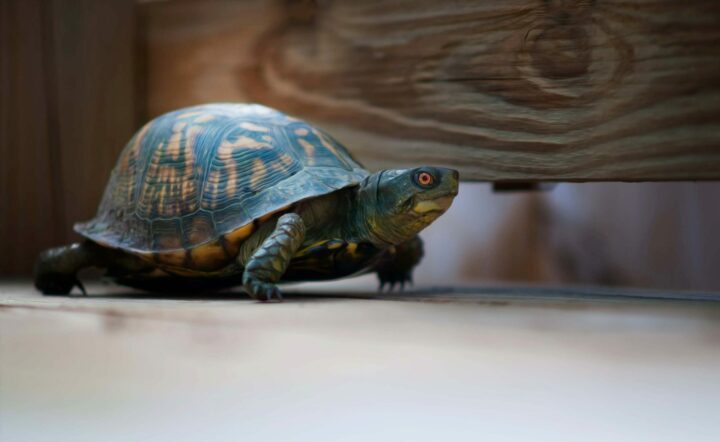Welcome to the captivating realm of home reptile breeding, where the mysteries of reproduction unfold in astonishing ways. Whether you’re a seasoned reptile enthusiast or just embarking on this thrilling journey, understanding the specific reproductive behaviors and considerations for breeding reptiles at home is essential.
In this article, we delve deep into the intricacies of reptilian reproduction, providing insights and guidance that will empower you to navigate this extraordinary process with confidence and success.
What triggers reptiles to breed in captivity?
Reptiles, just like their wild counterparts, have innate biological cues that trigger breeding behaviors when they are kept in captivity. Factors such as seasonal changes, photoperiods, and hormonal fluctuations play a significant role in stimulating reptiles to breed.
By mimicking the natural environmental conditions, including temperature, humidity, and light cycles, reptile keepers can effectively recreate the triggers for breeding. Understanding these triggers and providing the appropriate conditions will help encourage the reptiles to exhibit their natural reproductive instincts, leading to successful breeding outcomes.
How does temperature influence reptile reproduction?
Temperature is a critical factor that influences reptile reproduction in fascinating ways. For many reptile species, temperature plays a crucial role in determining the sex of the offspring.
This phenomenon, known as temperature-dependent sex determination (TSD), occurs when specific temperature thresholds during incubation determine whether the offspring will develop as males or females.
Additionally, temperature variations can impact the breeding behaviors and overall reproductive health of reptiles. By maintaining precise temperature gradients within their habitat and implementing appropriate heating and cooling techniques, reptile enthusiasts can create optimal conditions for successful reproduction and the development of healthy offspring.
Are there specific mating rituals unique to different reptile species?

Reptiles exhibit a captivating array of mating rituals, each unique to their respective species. From mesmerizing courtship dances and intricate displays of color to vocalizations and physical interactions, these rituals serve to attract potential mates and establish dominance hierarchies.
Some reptiles engage in elaborate courtship rituals that involve complex movements, synchronized displays, and intricate mating dances, while others rely on pheromones and chemical cues to communicate their availability and interest.
Exploring the diverse mating rituals across different reptile species offers a glimpse into the fascinating world of reptile courtship and the myriad ways they have evolved to ensure successful reproduction.
What are the challenges of breeding reptiles with complex reproductive cycles?
Breeding reptiles with complex reproductive cycles presents unique challenges for enthusiasts. Some reptile species require specific environmental conditions, such as temperature fluctuations or seasonal variations, to trigger breeding behaviors and reproductive cycles.
Replicating these complex natural processes in captivity can be demanding, as it requires meticulous monitoring and manipulation of various factors.
Additionally, some reptiles have intricate reproductive strategies, including delayed fertilization or long gestation periods, which demand patience and careful observation. Overcoming these challenges necessitates a deep understanding of the species’ reproductive biology and a dedicated commitment to providing the ideal conditions for successful breeding.
How do reptiles communicate their readiness to mate?
Reptiles employ a diverse range of fascinating communication methods to indicate their readiness to mate. These communication signals can vary from species to species, but they often involve visual displays, vocalizations, scent marking, and physical posturing.
Vibrant coloration, elaborate body movements, and impressive physical structures, such as throat pouches or dewlaps, are common ways reptiles visually communicate their reproductive availability and intentions.
Some reptiles emit unique calls or vocalizations to attract potential mates, while others rely on chemical signals, leaving scent trails or marking territories to convey their readiness to reproduce. Decoding these communication cues allows keepers to understand when their reptiles are primed for successful breeding.
Are there differences in reproductive behaviors between male and female reptiles?
Male and female reptiles often exhibit distinct reproductive behaviors, each playing a vital role in the mating process. Male reptiles commonly engage in elaborate displays of dominance and aggression to establish their territory and attract potential mates.
They may employ physical combat, vocalizations, or flamboyant displays to assert their dominance over competing males. Females, on the other hand, display behaviors geared towards evaluating potential mates and selecting the most suitable partner.
They may exhibit receptive postures, perform intricate courtship dances, or release pheromones to signal their availability. Understanding these differences in reproductive behaviors allows reptile enthusiasts to observe and facilitate successful breeding interactions between males and females.
What role does lighting play in reptile breeding?

Lighting plays a crucial role in reptile breeding, influencing various aspects of their reproductive biology. Reptiles often rely on specific light wavelengths and intensity to regulate their hormonal balance and trigger breeding behaviors.
Photoperiods, the duration of light and dark cycles, can mimic seasonal changes and influence the timing of reproductive cycles. For instance, providing longer light periods during spring stimulates breeding behaviors in many reptiles.
Additionally, ultraviolet (UV) lighting is essential for reptiles’ overall health and reproductive success, as it aids in vitamin D synthesis and calcium metabolism. Implementing appropriate lighting systems that mimic natural conditions is vital for promoting the well-being and reproductive success of captive reptiles.
How can you create optimal nesting environments for reptile breeding?
Creating optimal nesting environments is crucial for successful reptile breeding. Each reptile species has specific nesting requirements that must be met to ensure proper egg development and hatching.
Factors such as substrate type, temperature, humidity levels, and nesting materials play a significant role in creating suitable conditions. Researching the natural nesting habits of the particular species is essential, as it provides insights into their preferences.
Providing a secluded and secure nesting area, with appropriate substrate depth and moisture content, enables reptiles to lay their eggs comfortably. By replicating these optimal nesting environments, keepers can enhance the chances of successful breeding and the hatching of healthy offspring.
What are the key considerations for selecting compatible breeding pairs?
Choosing compatible breeding pairs is a crucial factor in successful reptile breeding. It involves assessing various aspects such as species compatibility, genetic diversity, health, and temperament.
Compatibility ensures that the individuals have similar environmental and behavioral requirements, reducing potential conflicts during breeding. Genetic diversity helps maintain the overall health and vigor of the offspring, preventing inbreeding-related issues.
Evaluating the health of the potential breeding pairs, including their reproductive history and overall condition, is vital for producing healthy offspring.
Additionally, considering the temperament of the individuals helps create a harmonious breeding environment. By carefully considering these key factors, reptile enthusiasts can select compatible breeding pairs that maximize the chances of successful reproduction.
How long does the gestation period last for various reptile species?
The gestation period for reptiles varies significantly across different species, ranging from a few weeks to several months. For example, some gecko species have a relatively short gestation period of around 4-6 weeks, while larger reptiles such as pythons or crocodilians can have gestation periods lasting several months.
Factors influencing the gestation period include species-specific biology, incubation conditions, and environmental factors. Understanding the average gestation period of the reptile species you are breeding is important for anticipating the timing of hatching and preparing for the arrival of the newborns.
What are the signs that indicate a female reptile is gravid (carrying eggs)?
Identifying the signs of gravidity (carrying eggs) in female reptiles is crucial for successful breeding management. Common signs include a noticeable increase in body size and weight, as the eggs develop and grow inside the female.
Some species exhibit changes in behavior, becoming more sedentary or showing nesting behaviors, such as digging or exploring potential egg-laying sites. Palpating the abdomen gently may reveal the presence of eggs, although this should be done with caution to avoid harming the reptile.
Additionally, radiographs or ultrasound scans can provide visual confirmation of eggs within the female. Recognizing these signs allows keepers to provide appropriate care and nesting conditions to support the egg-laying process.
How can you ensure proper incubation conditions for reptile eggs?

Creating proper incubation conditions is vital for the successful development of reptile eggs. Temperature and humidity are key factors to consider.
Researching the specific requirements of the species is crucial, as different reptiles have different optimal conditions. Using a reliable and accurate incubator or creating a dedicated incubation chamber helps maintain stable and consistent temperature levels.
Proper humidity levels can be achieved by using appropriate substrates, such as vermiculite or perlite, and periodically monitoring and adjusting moisture levels. Adequate ventilation is also necessary to prevent the buildup of harmful gases. By carefully managing these incubation conditions, keepers can provide an optimal environment for the eggs to develop and hatch successfully.
What factors influence the success rate of reptile egg incubation?
Several factors can influence the success rate of reptile egg incubation. Temperature and humidity are critical factors, as deviations from the optimal range can lead to developmental abnormalities or unsuccessful hatching.
Consistency and stability in maintaining the incubation conditions throughout the entire incubation period are crucial. Proper ventilation is necessary to ensure sufficient oxygen exchange and prevent the buildup of harmful gases.
The quality and viability of the eggs themselves also impact the success rate, as damaged or infertile eggs may not hatch. Finally, the level of care and attention provided during the incubation process, including regular monitoring and adjustment of conditions, significantly contributes to the success rate.
Are there common challenges or complications during the hatching process?
The hatching process of reptiles can sometimes present challenges or complications. Some eggs may experience difficulty in pipping, which is the process of the hatchling breaking through the eggshell.
In such cases, it is important to resist the urge to assist the hatchling unless it shows signs of distress or is taking an unusually long time to hatch. Premature assistance can hinder the hatchling’s development and reduce its chances of survival.
Additionally, hatchlings may occasionally encounter issues such as improper yolk absorption or deformities, which may require veterinary intervention. Providing a supportive and controlled environment, with appropriate humidity levels and safe nesting materials, helps minimize complications during hatching and promotes the healthy emergence of the hatchlings.
What post-birth care is necessary for reptile hatchlings?
| Reproductive Behavior | Considerations | Importance |
|---|---|---|
| Mating Rituals | Understanding species-specific courtship behaviors and displays | Facilitates successful breeding interactions and pair bonding |
| Temperature Influence | Maintaining optimal temperature gradients and mimicking natural seasonal changes | Affects hormonal balance, sex determination, and breeding triggers |
| Selection of Compatible Breeding Pairs | Evaluating genetic diversity, health, and temperament | Ensures successful reproduction and produces healthy offspring |
| Egg Incubation | Providing stable temperature, humidity, and ventilation | Critical for proper development and hatching of reptile eggs |
| Post-Birth Care | Maintaining optimal temperature, humidity, and providing appropriate enclosure setups | Supports healthy growth, nutrition, and overall well-being of hatchlings |
Post-birth care is crucial for the well-being and survival of reptile hatchlings. Maintaining optimal temperature and humidity levels is essential to support their growth and development.
Hatchlings often require specific microhabitat setups, including appropriately sized enclosures with suitable hiding spots and proper substrate. Providing a varied and nutritionally balanced diet that meets the specific dietary requirements of the species is vital for their healthy growth.
Regular monitoring of their feeding behavior, growth, and overall health is necessary to ensure any issues are promptly addressed. By providing attentive care and a nurturing environment, reptile enthusiasts can set their hatchlings on the path to thrive and flourish.
Concluding remarks
In conclusion, breeding reptiles at home is an exciting and rewarding endeavor that requires a deep understanding of their specific reproductive behaviors and considerations. By uncovering the triggers for breeding, understanding the influence of temperature, exploring unique mating rituals, and addressing the challenges of complex reproductive cycles, we can navigate this captivating world with confidence.
Additionally, recognizing the signs of gravidity, ensuring proper incubation conditions, and providing post-birth care are essential for the successful hatching and development of healthy hatchlings.
Through careful observation, attention to detail, and a commitment to providing optimal conditions, we can unlock the wonders of reptile reproduction and embark on a truly fulfilling journey in our home reptile breeding endeavors.




